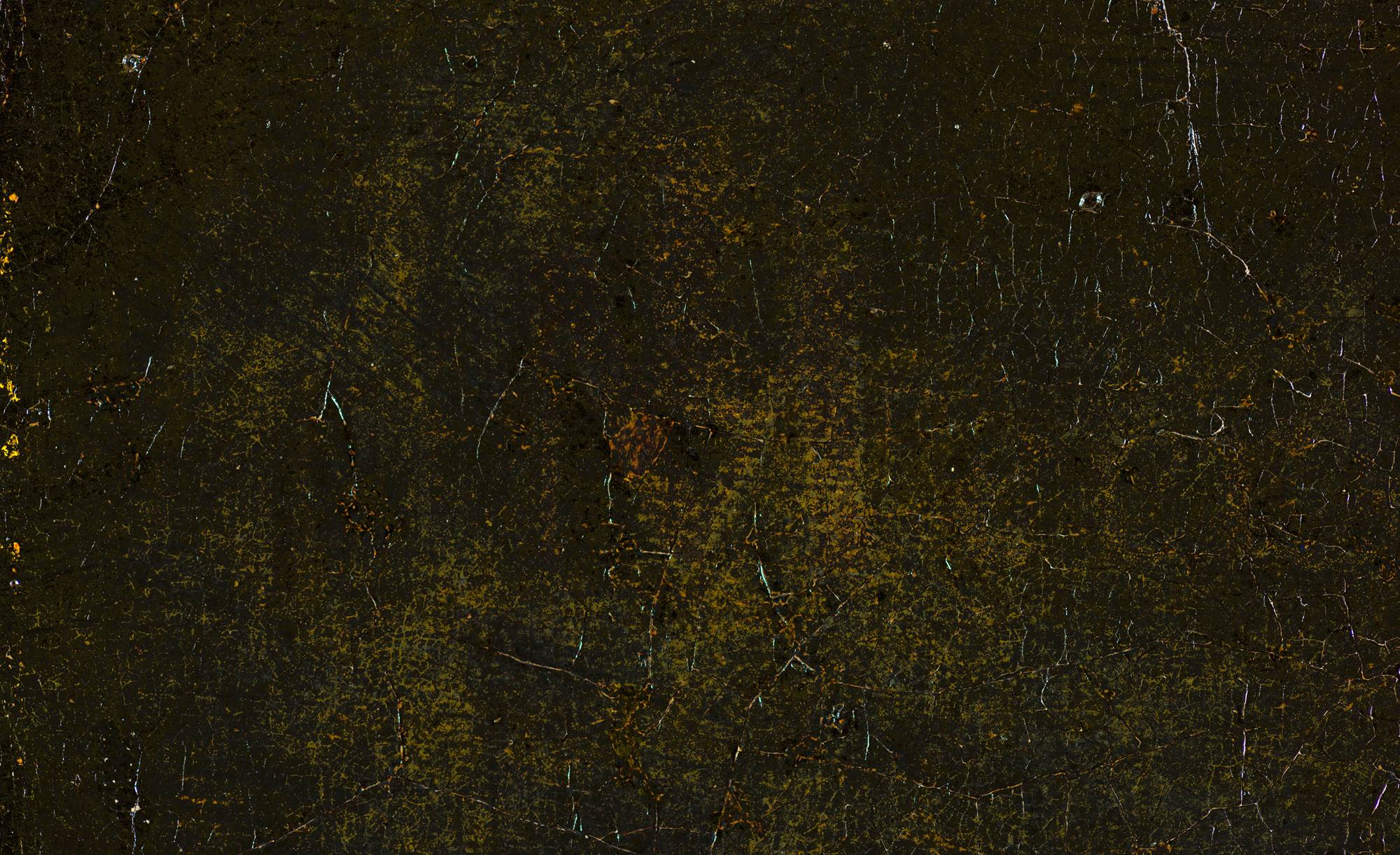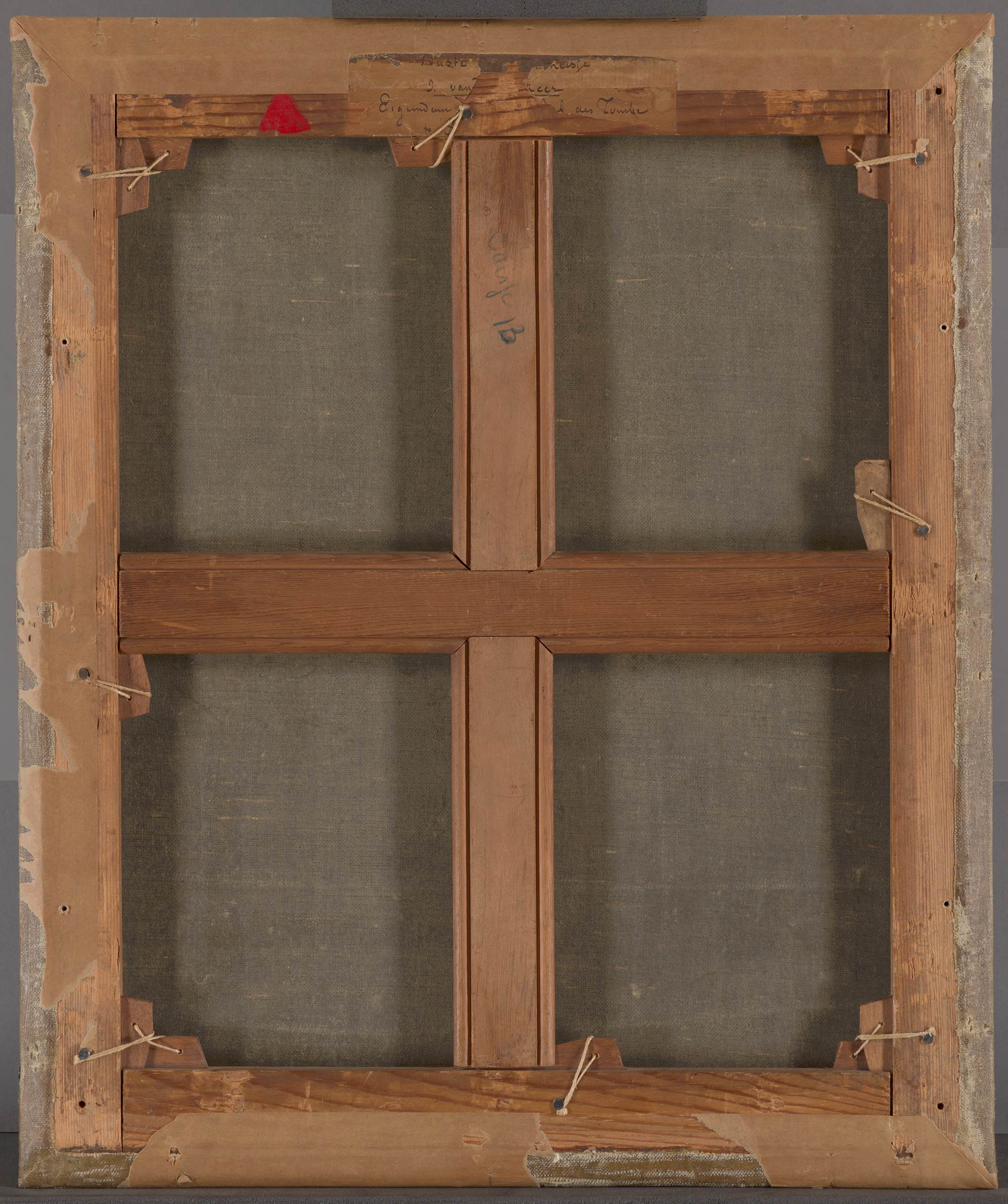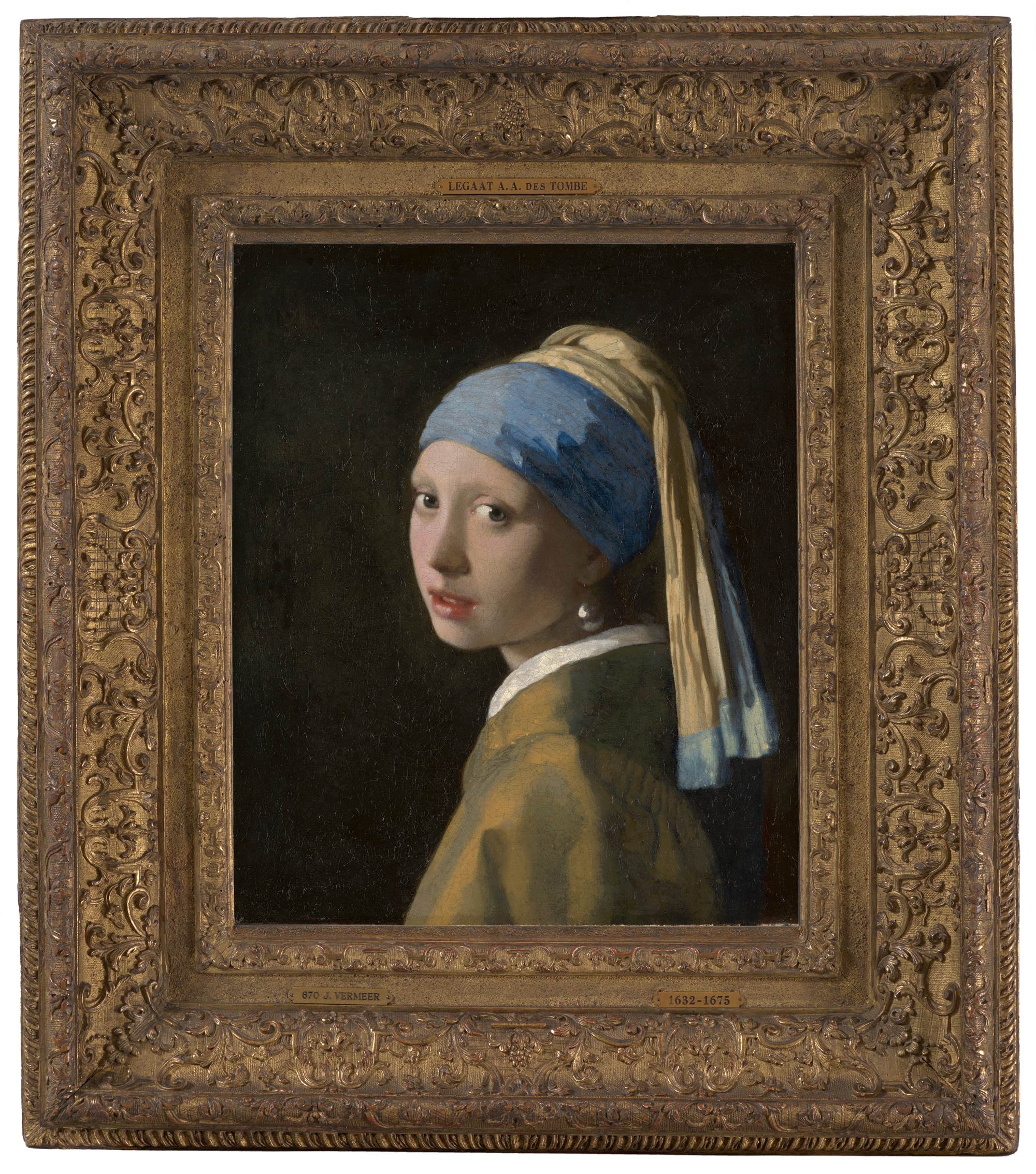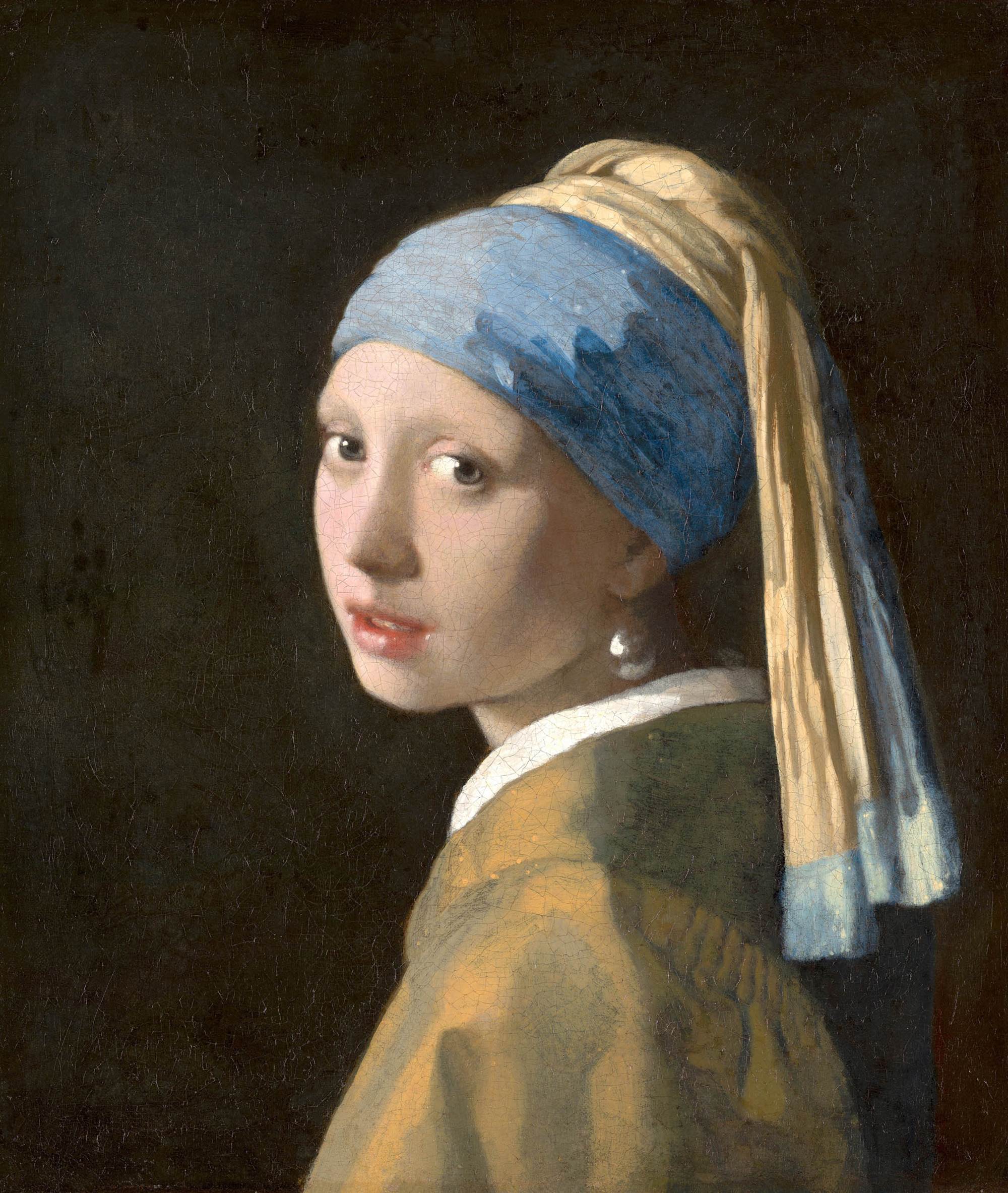A young woman looks over her shoulder at us. She holds her head slightly to one side, there is a gleam in her greyish-blue eyes, and her lips are slightly parted and moist. On her head is a turban that she has wound from two pieces of material, one blue and one yellow, and she is adorned with a pearl earring. It is from this oversized jewel in the middle of the composition that the painting derives its title.
The painting provides a rich sample of every aspect of Vermeer’s virtuoso painting technique. The face is modelled very softly, not in great detail but with gradual transitions and invisible brushstrokes. The clothing is depicted more schematically and enlivened with small dots of paint suggesting reflected light – one of Vermeer’s trademark features. Even so, the artist has clearly indicated differences between materials – for instance between the white collar, painted in impasto, and the drier paint of the turban, for which he used the precious pigment ultramarine. But the most remarkable detail is the pearl. This consists of little more than two brushstrokes: a bright highlight at upper left and the soft reflection of the white collar on the underside.
Seventeenth-century Dutch girls did not wear turbans. With this accessory Vermeer has given the girl an Oriental air. Images like this were known in the seventeenth century as tronies. Tronies are not portraits: they were not made in order to produce the best possible likeness of an individual. Although there would probably be a sitter, the point of a tronie was mainly to make a study of a head representing a particular character or type. Rembrandt had popularised tronies in Dutch art around 1630. He made dozens of them, often using himself as the model, sometimes wearing a remarkable cap or a helmet.
The pearl is too large to be real. Perhaps the girl is wearing a pearl drop made of glass, which has been varnished to give it a matte sheen. Another possibility, of course, is that the pearl was a product of Vermeer’s imagination. Pearls – both real and imitation – were fashionable in the period from about 1650 to 1680. We often find them in paintings by Frans van Mieris, Gabriel Metsu and Gerard ter Borch.
Girl with a Pearl Earring has been known to the general public only since 1881, when it was put up for auction at the Venduhuis der Notarissen in The Hague. On the viewing day it attracted the attention of the influential cultural official Victor de Stuers, who was there together with his friend and neighbour, the art collector A.A. des Tombe. Tradition has it that even though the painting had been badly neglected, De Stuers recognised it as a Vermeer. According to a different version of the story, the painting was too dirty to be properly appraised, and the painter’s identity only became clear later on, when the cleaning operation revealed his signature. Whatever the case may be, De Stuers and Des Tombe agreed not to bid against each other, and Des Tombe therefore acquired the painting for the negligible sum of two guilders plus thirty cents mark-up.
Des Tombe’s collection, which included works by contemporaries as well as old masters, was open to visitors at his home, at Parkstraat 26 in The Hague. The future director of the Mauritshuis, Abraham Bredius, was the first to extol the virtues of Girl with a Pearl Earring when he saw it at Parkstraat in 1885: ‘Vermeer overshadows all the rest; the girl’s head, so superbly modelled that one is almost inclined to forget one is looking at a painting, and that single gleam of light, will alone hold your attention’. When he died, on 16 December 1902, Des Tombe turned out to have made a secret will bequeathing twelve paintings to the Mauritshuis, including Girl with a Pearl Earring.
(this is a reworked version of a text published in in: P. van der Ploeg, Q. Buvelot, Royal Picture Gallery Mauritshuis: A princely collection, The Hague 2005, pp. 256-258)









